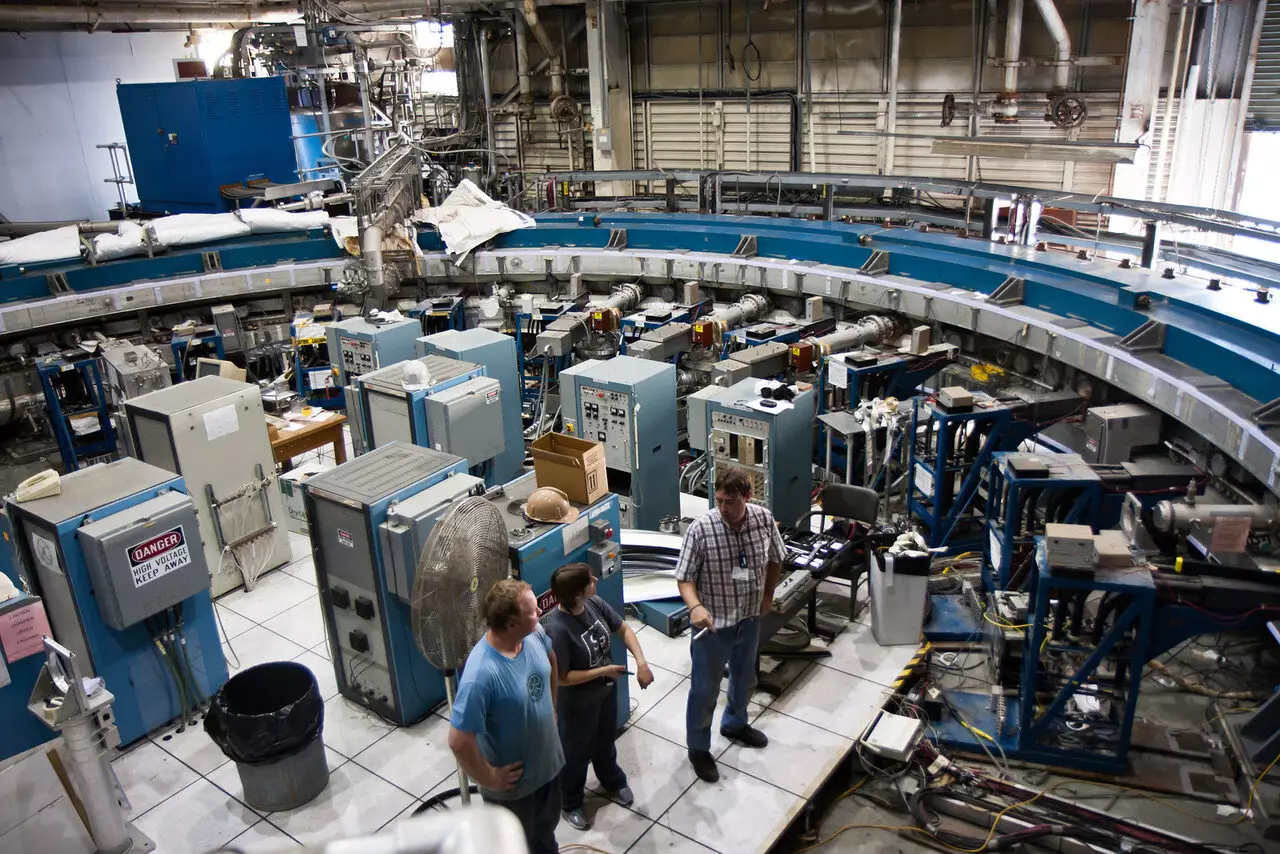The realm of particle physics consistently faces the challenge of achieving unprecedented levels of precision, especially when it comes to understanding fundamental particles. Recently, scientists engaged in the Muon g-2 Collaboration achieved a remarkable milestone by measuring the magnetic moment of the muon with a precision more than double that of previous records. This breakthrough not only enhances our understanding of the muon, a heavier counterpart to the electron, but also raises captivating questions regarding the standard model of particle physics.
To comprehend this accomplishment, we must first grasp the importance of the muon itself. Discovered in 1936, the muon is a lepton, categorized as a “heavy electron” that possesses similar electric charge and spin properties, yet it is about 207 times more massive than an electron. As the Muon g-2 Collaboration continues its meticulous work at Fermilab in the United States, their measurement marks a significant leap forward compared to earlier efforts conducted at Brookhaven National Laboratory.
The experiment utilized a particle storage ring, specifically designed to accelerate muons to speeds nearing that of light. This ring, approximately 7.1 meters in diameter, is subject to a magnetic field roughly 30,000 times stronger than Earth’s. As the muons whip around this storage ring, they exhibit a precession of their spins—a behavior akin to tops swirling. This motion results from their intrinsic magnetic moment interacting with the applied magnetic field, influenced by complex virtual particle interactions inherent in quantum mechanics.
By measuring the precession frequency and comparing it to the cycling frequency, researchers are able to extract the muon’s anomalous magnetic moment with astounding precision of 0.2 parts per million. This level of accuracy is essential for the ongoing effort to compare experimental data against theoretical predictions, which stand as a benchmark within the realm of quantum electrodynamics (QED).
The measurement of the muon’s magnetic moment is not an isolated endeavor; it carries substantial implications for our understanding of the universe. Currently, the electron’s magnetic moment is known with immense precision—up to 11 significant digits with a relative accuracy of one part in 10 trillion. The theoretical predictions derived from QED have shown remarkable agreement with measured values, but the muon’s heavier mass introduces complexities that render its prediction both challenging and intriguing.
The theoretical framework surrounding the muon involves two additional factors beyond those used for electrons: contributions arising from electroweak theory, which includes the effects of virtual Higgs and Z bosons, and the influence of hadronic particles, such as protons and neutrons. These additional considerations enhance the sensitivity of muon experiments to hypothetical new physics phenomena that could exist beyond the established standard model.
The Muon g-2 Collaboration has noted that while the QED and electroweak contributions are widely accepted, the predictions involving hadrons remain contentious. These predictions are hindered by limited knowledge regarding vacuum fluctuations among strongly interacting particles, which accentuates the necessity for further measurements and theoretical refinements.
Despite achieving a significant precision improvement in this recent measurement, researchers caution that further comparisons to theoretical predictions are currently unviable. The explanation lies in the ongoing discrepancies in prior experimental data, which are critical for elucidating theoretical uncertainties concerning hadronic contributions to the muon’s magnetic moment.
Over the span of three years, the Muon g-2 Collaboration has refreshingly produced an extensive data set, bolstered by the delivery of muons in a carefully timed sequence. By addressing systematic biases—including corrections for muon losses and transient perturbations in the magnetic field—scientists have laid the groundwork for future analyses that promise improved statistical precision.
Looking ahead, the collaboration plans to analyze additional data that is projected to further enhance precision by another factor of two. The expectation that continued investigation will unveil more about the muon and its properties aligns with scientists’ overarching goal of decoding the very fabric of our universe.
The quest to accurately determine the muon’s anomalous magnetic moment serves as a testament to human curiosity and ingenuity in the face of the unknown. The Muon g-2 Collaboration’s recent achievements underscore an era of scientific exploration that holds the potential to unravel mysteries far beyond the confines of the standard model of particle physics. As researchers continue to refine measurements and explore unanswered questions, we stand on the precipice of new discoveries that could redefine our conceptualization of fundamental forces and particles in the universe.


Leave a Reply